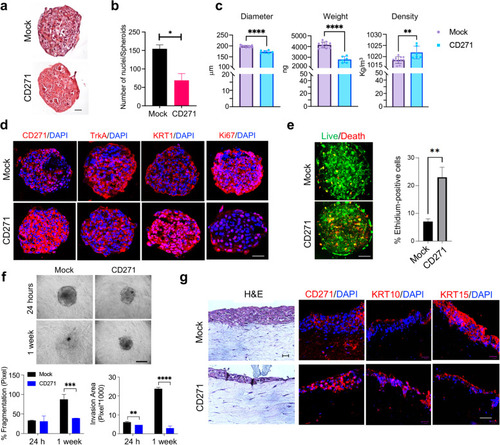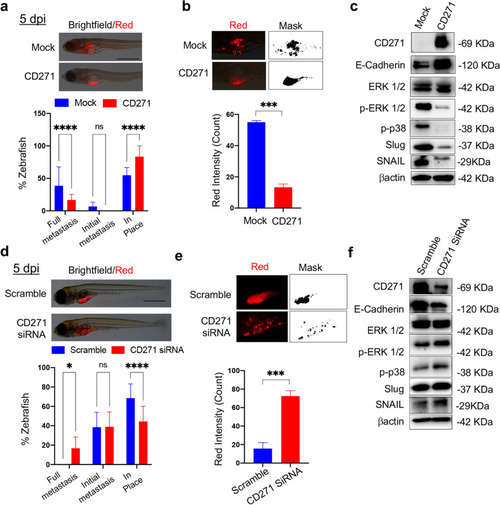- Title
-
CD271 activation prevents low to high-risk progression of cutaneous squamous cell carcinoma and improves therapy outcomes
- Authors
- Quadri, M., Tiso, N., Musmeci, F., Morasso, M.I., Brooks, S.R., Bonetti, L.R., Panini, R., Lotti, R., Marconi, A., Pincelli, C., Palazzo, E.
- Source
- Full text @ J. Exp. Clin. Cancer Res.
|
CD271 expression in cSCC biopsies and spheroids |
|
CD271 modulation affects cSCC spheroid phenotype |
|
CD271 overexpression promotes cSCC differentiation |
|
CD271 modulation improves PDT or chemotherapy efficiency |
|
Effects of CD271 activation on cSCC spheroid viability and invasion |
|
CD271 activation increases response to chemotherapy and promotes macrophage recruitment in zebrafish |
|
CD271 expression increases the immune cell recruitment in vivo and in vitro |
|
CD271 expression abolishes cSCC metastasis in zebrafish |








